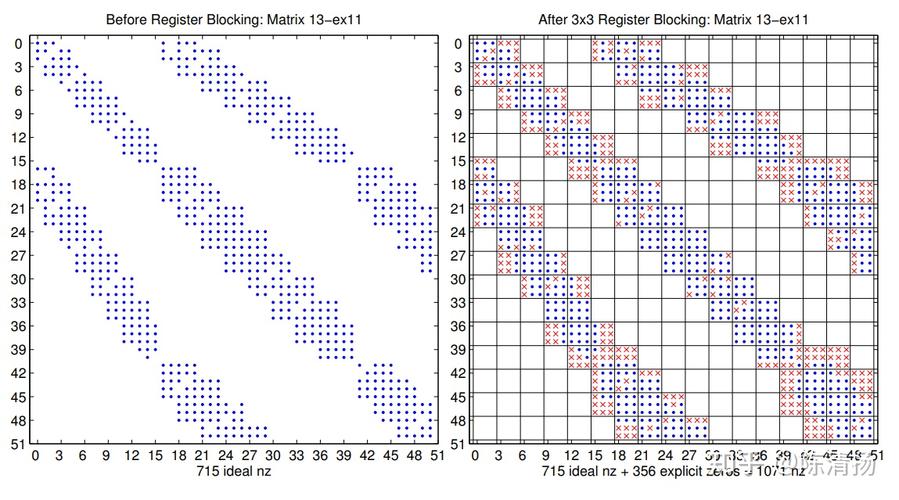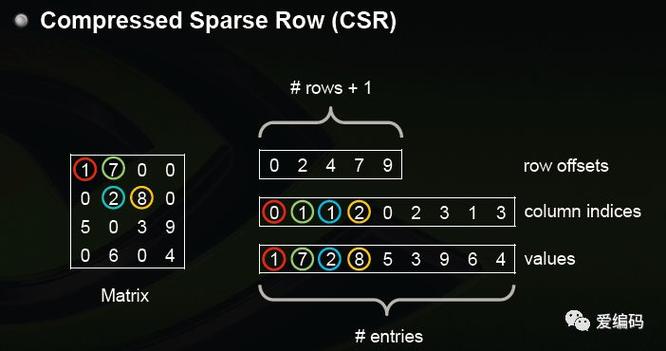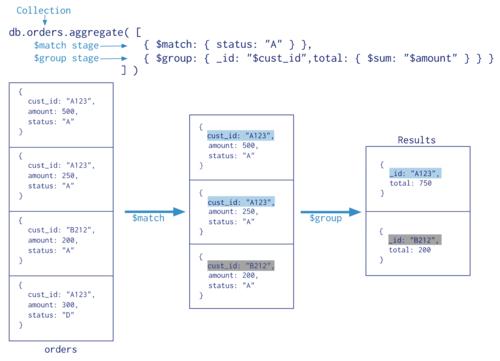Compressed Sparse Row Format (CSR)
-
-
three numpy arrays:
indices,
indptr,
data
- indices is array of column indices
- data is array of corresponding nonzero values
- indptr points to row starts in indices and data
- length is n_row + 1, last item = number of values = length of both indices and data
- nonzero values of the i-th row are data[indptr[i]:indptr[i+1]] with column indices indices[indptr[i]:indptr[i+1]]
- item (i, j) can be accessed as data[indptr[i]+k], where k is position of j in indices[indptr[i]:indptr[i+1]]
-
subclass of
_cs_matrix (common CSR/CSC functionality)
- subclass of _data_matrix (sparse matrix classes with .data attribute)
- fast matrix vector products and other arithmetics (sparsetools)
-
constructor accepts:
- deNSE matrix (array)
- sparse matrix
- shape tuple (create empty matrix)
- (data, ij) tuple
- (data, indices, indptr) tuple
- efficient row slicing, row-oriented operations
- slow column slicing, expensive changes to the sparsity structure
-
use:
- actual computations (most linear solvers support this format)
Examples¶
create empty CSR matrix:
 (图片来源网络,侵删)
(图片来源网络,侵删)>;>> mtx = sparse.csr_matrix((3, 4), dtype=np.int8) >>> mtx.todense() matrix([[0, 0, 0, 0], [0, 0, 0, 0], [0, 0, 0, 0]], dtype=int8)
create using (data, ij) tuple:
>>> row = np.array([0, 0, 1, 2, 2, 2]) >>> col = np.array([0, 2, 2, 0, 1, 2]) >>> data = np.array([1, 2, 3, 4, 5, 6]) >>> mtx = sparse.csr_matrix((data, (row, col)), shape=(3, 3)) >>> mtx >>> mtx.todense() matrix([[1, 0, 2], [0, 0, 3], [4, 5, 6]]...) >>> mtx.data array([1, 2, 3, 4, 5, 6]...) >>> mtx.indices array([0, 2, 2, 0, 1, 2], dtype=int32) >>> mtx.indptr array([0, 2, 3, 6], dtype=int32)create using (data, indices, indptr) tuple:
 (图片来源网络,侵删)
(图片来源网络,侵删)>>> data = np.array([1, 2, 3, 4, 5, 6]) >>> indices = np.array([0, 2, 2, 0, 1, 2]) >>> indptr = np.array([0, 2, 3, 6]) >>> mtx = sparse.csr_matrix((data, indices, indptr), shape=(3, 3)) >>> mtx.todense() matrix([[1, 0, 2], [0, 0, 3], [4, 5, 6]])See https://scipy-lectures.org/advanced/scipy_sparse/csr_matrix.html
HTTPS://docs.scipy.org/doc/scipy-0.15.1/reference/generated/scipy.sparse.csr_matrix.html
- actual computations (most linear solvers support this format)
-
three numpy arrays:
indices,
indptr,
data









